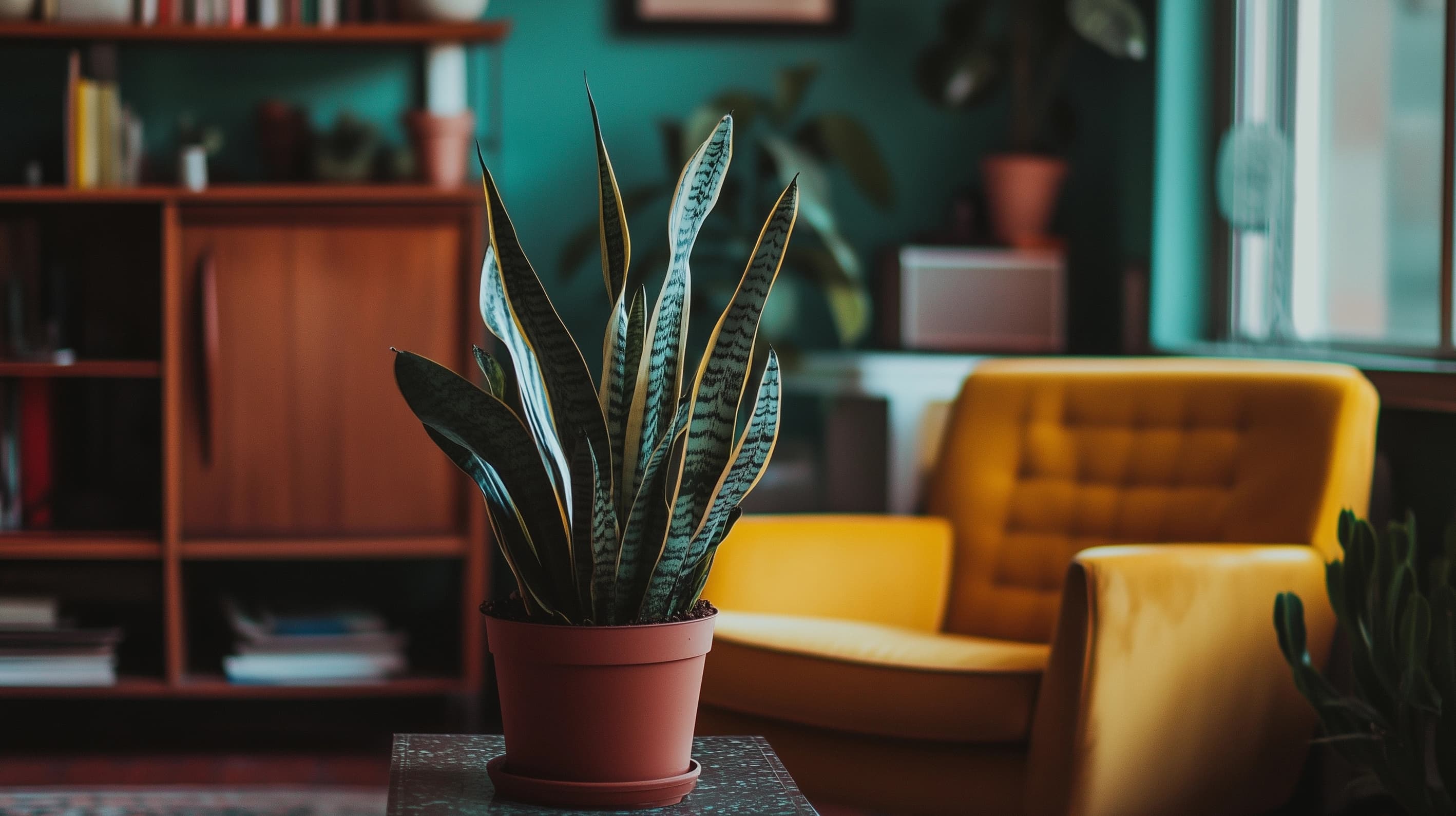Snake Plant (Sansevieria)
Architectural, air-purifying succulent that thrives on minimal care

The Snake Plant, scientifically known as Sansevieria or recently reclassified as Dracaena trifasciata, is an architectural marvel in the plant world. Its striking appearance features tall, rigid leaves that grow vertically, reaching heights between 6 inches to several feet. The leaves showcase distinctive patterns of dark green bands with lighter green or yellow edges, resembling the scales of a snake, hence its common name. Some varieties like 'Laurentii' sport golden margins, while others like 'Moonshine' display silvery-gray coloration.
Native to West Africa's tropical regions, particularly Nigeria and Congo, the Snake Plant has a rich cultural history. Traditional African cultures believed it possessed protective properties and would place it near entrances to ward off evil spirits. The plant was brought to Europe in the late 17th century and gained popularity during the Victorian era, where it became a staple of indoor gardening due to its tolerance of the era's dimly lit homes.
When it comes to lighting, the Snake Plant is remarkably adaptable, making it perfect for various indoor environments. While it thrives in bright indirect light, it can survive in low light conditions that would kill most other plants. However, when placed in very low light, its growth will slow significantly, and the vibrant leaf patterns may become less pronounced. Direct sunlight is acceptable, but the plant should be gradually acclimated to prevent leaf burn.
One of the most compelling aspects of Snake Plants is their exceptional air-purifying abilities, as demonstrated in NASA's Clean Air Study. These plants are particularly effective at removing toxins like formaldehyde, nitrogen oxides, and benzene from indoor air. They also possess the unusual trait of converting carbon dioxide to oxygen at night, making them excellent bedroom companions. However, plant owners should be aware that Snake Plants are toxic to pets if ingested, containing compounds that can cause gastrointestinal distress.
Regarding care considerations, the most common mistake plant owners make is overwatering, as Snake Plants are succulents that store water in their leaves. They prefer to dry out completely between waterings, and during winter months, they might only need water once every 4-6 weeks. Poor drainage or consistently wet soil can lead to root rot, which is often fatal. Additionally, while these plants are generally pest-resistant, they can occasionally fall victim to mealybugs or spider mites, particularly if stressed by overwatering or poor light conditions. Despite these minor concerns, Snake Plants remain one of the most forgiving and low-maintenance houseplants available.
Submitted by Claudia
You might also like:

African Violet (Saintpaulia)
Charming flowering houseplant with fuzzy leaves and delicate blooms

Air Plants (Tillandsia)
Rootless wonders that thrive on air and minimal care

Aloe Vera
Thick, fleshy leaves containing a clear gel used medicinally for thousands of years

Anthurium
Striking tropical plant with glossy heart-shaped leaves and vibrant blooms

Bamboo Palm (Chamaedorea seifrizii)
Elegant air-purifying palm that mimics bamboo's graceful appearance

Bird of Paradise (Strelitzia reginae)
Dramatic tropical plant with striking orange and blue flower heads